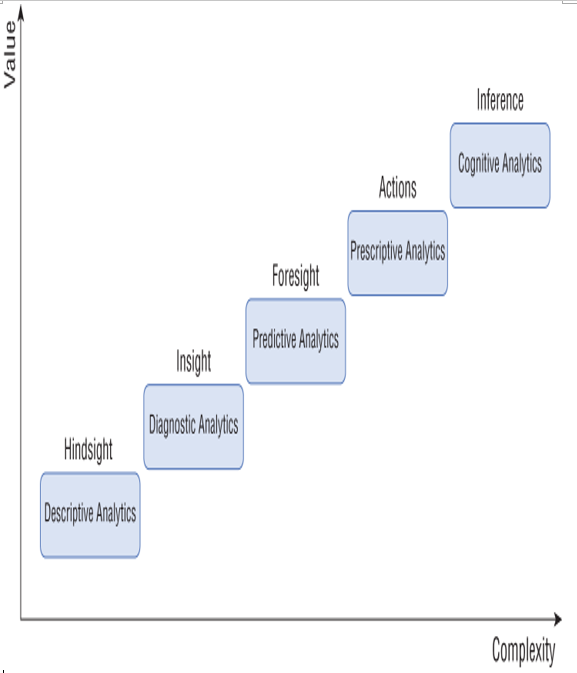Categories
Archives
- July 2024
- June 2024
- May 2024
- March 2024
- January 2024
- December 2023
- October 2023
- September 2023
- August 2023
- July 2023
- May 2023
- April 2023
- January 2023
- December 2022
- October 2022
- September 2022
- July 2022
- June 2022
- April 2022
- March 2022
- December 2021
- November 2021
- September 2021
- July 2021
- May 2021
- March 2021
- January 2021
Describe Analytics Techniques
While it is important to spend considerable time planning and developing data processing pipelines, it is vital not to forget about the questions that drove the solution to be built in the first place. Being able to answer questions like the following is critical to the success of a business: What has happened? Why did certain events happen? What will happen? What should we do? and What might happen if different variables change?. Knowing how to answer these questions can help businesses understand their past successes and failures and predict what actions they should take in the future. These questions can be answered using the five types of analytics techniques, telling the story of a business’s past, present, and future.
The five types of analytics include descriptive, diagnostic, predictive, prescriptive, and cognitive analytics. Each type of analytics represents a different stage of an organization’s analytics maturity. For example, descriptive analytics techniques are based on decades of best practices that are easier to implement than prescriptive analytics but do not provide as much value. The relationship between the value provided by an analytics technique and its implementation complexity is known as the Analytics Maturity Model. This is illustrated in Figure 1.17.

FIGURE 1.17 Analytics Maturity Model
Descriptive
Descriptive analytics use historical data to answer questions about what has happened to the business. This is a great first step for conducting statistical analysis as it informs decision makers of any trends, data distribution, and if there are any outliers in the data. Key performance indicators (KPIs) allow analysts to summarize large datasets to track the success and failure of key objectives. This type of analysis is reactive and is typically the first analysis technique used by organizations making decisions based on data.
Data used for descriptive analytics is typically gathered and persisted in a central repository, such as a data warehouse. Well-designed data warehouses make it easy for OLAP models and BI tools to analyze performance metrics against a variety of scenarios. An example of descriptive analytics is generating reports to provide a view of an organization’s sales data.


Leave a Reply